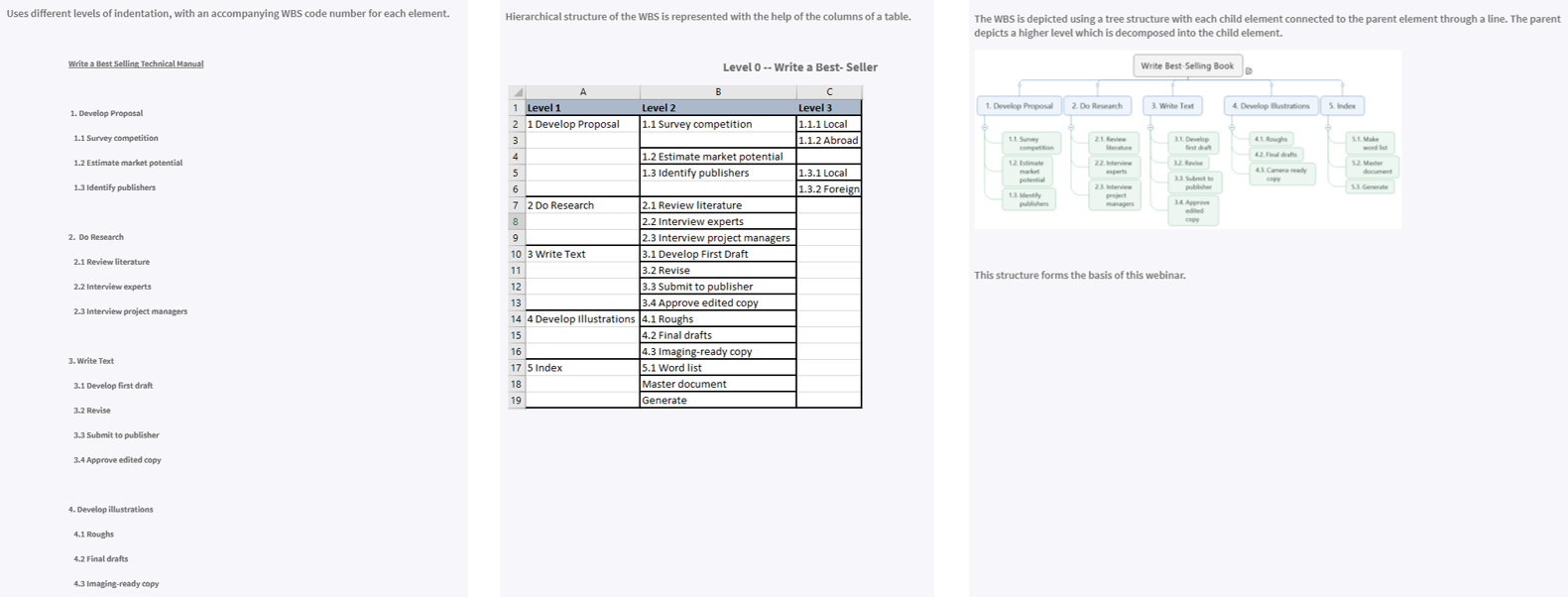Have you ever found yourself in the middle of a project that’s falling apart at the seams? How about being lost in an overly-complicated, directionless project that seems to have no end goal, let alone an end date? I’m willing to guess a large majority of readers answered “yes” to at least one of those questions, and the rest are likely too busy trying to crawl out from under their current project to answer.

It’s a problem that most people have experienced – or regularly experience – when they kick off a new project. What starts out as a project with good intentions and ideas often quickly turns into one mired by misaligned teams, missed milestones, or stalled projects. The good news, however, is that these headaches can be prevented with solid planning using a detailed, repeatable template known as a Work Breakdown Structure (WBS).
If you regularly follow our blog or monthly webinars, you may have been one of the thousands of people who tuned in to hear Jeff Kearns explain the project-saving benefits of a work breakdown structure, and how they can be implemented quickly and easily. But, in case you missed it, we thought we’d share some quick information about what a WBS is, and show you a great work breakdown structure template that will get you started.
What is a Work Breakdown Structure?
Simply put, a WBS is a task-oriented breakdown of a project into smaller and more manageable sections. It provides a detailed outline of 100% of the work needed to complete a project, and is the backbone and road map for all of your activities throughout the workflow. If done correctly, a WBS will give you a detailed and accurate estimation of the time, cost and resources needed to complete your project.
While there are many different methods for creating a work breakdown structure, depending on the scope and complexity of the project, a WBS typically falls into one of three popular views:
- Outline views, that are organized in a header, sub header, etc. format similar to a table of contents ;
- Tabular views, that are organized into a table using a spreadsheet software like Excel ; or
- Tree structures, that organize topics, sub-topics, tasks and sub-tasks into a graphical map view.

That’s a WBS in a nutshell. If you want to take a deep dive into the world of work breakdown structures, you can watch Jeff’s full webinar here.
Try this Work Breakdown Structure Template
To get you thinking about how you can use a WBS for your next project, we wanted to show you this simple work breakdown structure template we created using MindManager. Try this WBS template when planning your next project to get you started on the right track!
Get More Project Management Templates!
If you like what you saw from the work breakdown structure template above, then you’ll love some of the other project management maps we have ready to go in our new eBook “5 Ways to Drive (and Accelerate!) Project Team Alignment Using Mind Maps”.
We’ve included a variety of map templates that will help you plan and execute all of your projects going forward. You’ll also learn how mind mapping can help your teams stay aligned and thrive during your next project. Sound interesting? Download the eBook for free!



